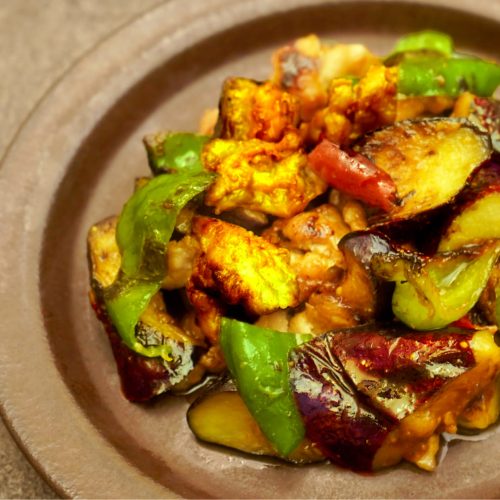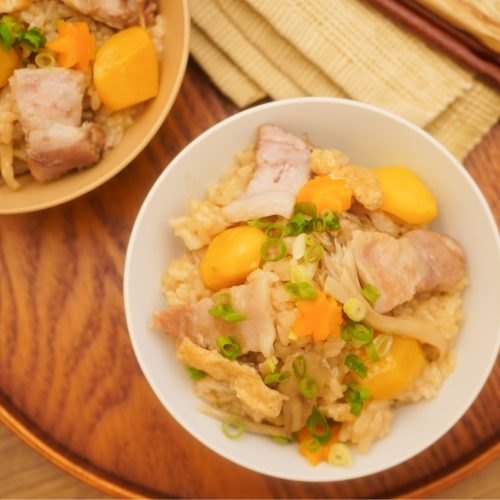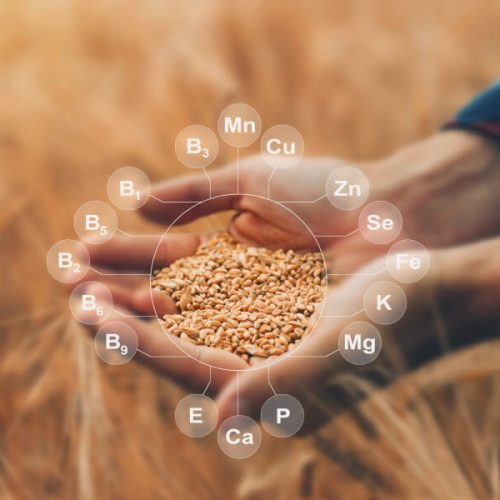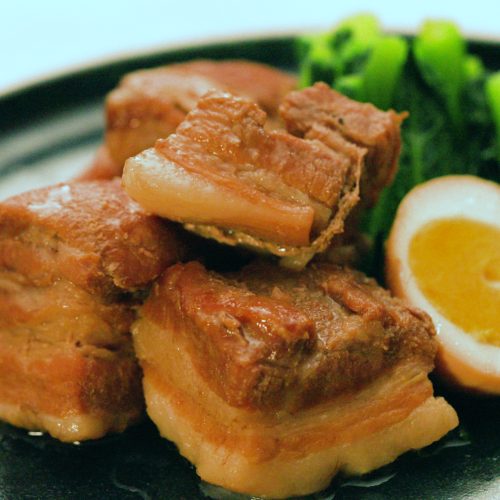- COLUMN
About the characteristics of the parts – Part1 – Porkology vol.3
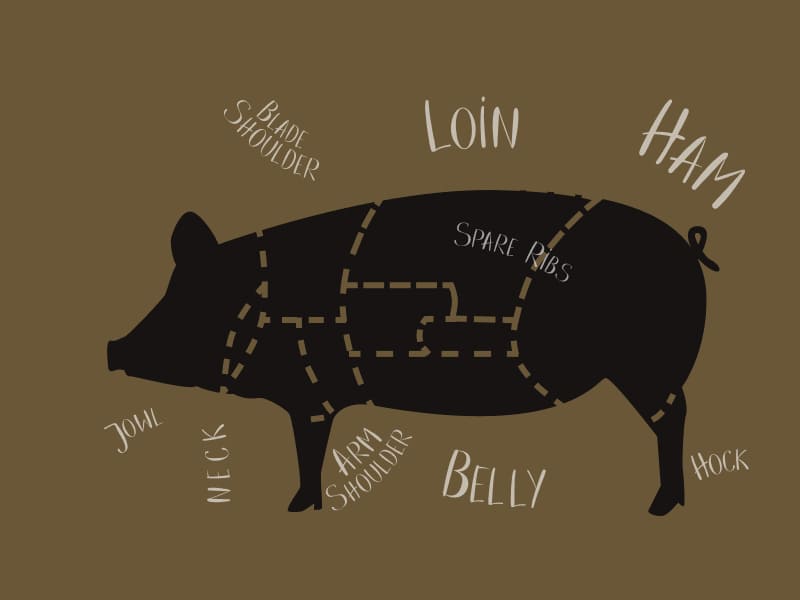
“Porkology” introduces various information about pork from the perspective of a registered dietitian. In the 3rd and 4th, I will explain the parts of pork.
Although differences can be seen for each part, pork does not have as much difference in meat quality as beef. Therefore, the high potential that can be used for a wide range of dishes is attractive. However, it is also true that they have different characteristics and are suitable for different dishes. With a better understanding of the parts, you’ll be able to make better use of your pork.
This time, I would like to focus on the orthodox pork loin, fillet, belly, thigh, and shoulder loin, and look at the characteristics of each.
We’ll introduce the characteristics of each part, such as the taste and quality of the meat, as well as the dishes that will be even tastier if you use that part.
Loin
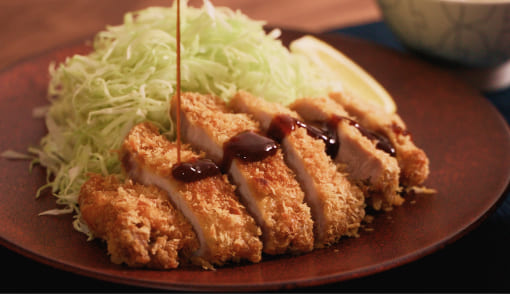
Loin is the back meat from the breast to the back of the pig. It is one of the main cuts of pork and is highly popular, and many people rate it as their favorite part of pork. Because the lean meat and fat are well-balanced, the meat is fine-textured and soft, while the texture is just right. It is rich in protein, which is one of the three major nutrients, and helps maintain a healthy body by shaping muscles, skin, and hair.
The sirloin has a concentrated flavor not only in the lean meat but also in the fat, so it is suitable for recipes that make use of the fat without removing too much.
When cooking the loin, be careful not to overcook it. If you overcook it, the tender meat will become tough. Cutting the sinews before cooking makes it difficult for the meat to harden, so try adding a little extra work before cooking.
- Good balance of fat and lean
- Fine and soft flesh
- Abundant protein
- POPULAR RECIPES
- It is suitable for various dishes such as ginger-fried pork, pork cutlet, and pork saute. In Japan, it is often processed as ham, and roast ham is very popular.
Tenderloin

There is a tenderloin on each side of the loin, and only two of them can be taken from each head. It accounts for only 2% of all pork, and the price is a little high because of its high rarity. However, it is said to have the softest meat quality among pork parts, and is characterized by its light, high-quality flavor with little fat.
In addition, it contains particularly excellent nutrients, and is rich in minerals such as vitamin B1, which is said to help recover from fatigue, and iron and zinc, which carry oxygen throughout the body. If you want to take plenty of nutrition for your health, choose tenderloin meat positively among pork.
In addition, it is very useful when you want to eat healthy because it is low in calories and sugar. If you grill the meat without using oil, you can eat meat while avoiding too much fat even if you are on a diet. On the other hand, it is also a part that is compatible with oil. If you want to add juiciness, try incorporating it into recipes that use oil.
- Low fat and light
- Rich in vitamin B1, iron and zinc
- POPULAR RECIPES
- Suitable for tenderloin and steaks. Baked without using oil, even if you eat healthy ◎
Belly

The belly is the meat around the ribs of a pig’s belly. It is also called sanmainiku because it has three layers of lean meat and fat. It has a high proportion of fat, so it is recommended for those who want to fully enjoy the umami of pork fat. It is a popular part because it can be purchased at a reasonable price.
Roses have a lot of fat, so they have the characteristic of not becoming dry even when heated. You can enjoy juicy pork dishes by cooking under pressure or simmering for a long time.
Fat is a big attraction of roses, but if you are on a diet and want to eat as healthy as possible, the amount of fat may be a concern. However, the fat contained in roses is rich in oleic acid. Compared to other oils, oleic acid has a high antioxidant effect that suppresses the attack of active oxygen, so it can be expected to have a preventive effect against diseases such as cancer, arteriosclerosis, and myocardial infarction. The Hokkaido brand pork “Yume no Daichi” is also rich in oleic acid, so it is recommended when you want to take in high-quality oil.
In addition, roses are rich in collagen, and you can expect beauty effects. If you want to avoid excessive fat intake, try boiling it to remove the fat.
- Not dry and juicy
- Rich in oleic acid and collagen
- POPULAR RECIPES
- Characterized by its soft flesh, it is suitable for shabu-shabu, braised pork, and grilled pork. It is sometimes processed into bacon.
Leg
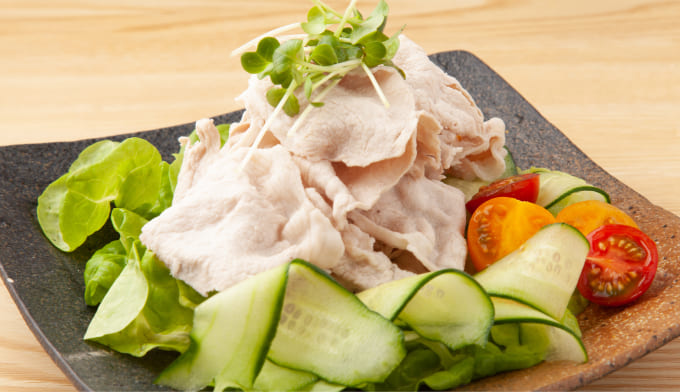
Pork leg, which is the part from the buttocks to the base of the hind legs of the pig. It is a large mass of muscle, and it is characterized by its firm flesh because it is a part that moves frequently. Because it has little fat and a lot of red meat, you can feel the fine and soft texture. Even those who are concerned about fat will be able to enjoy pork dishes with a light and elegant taste.
Because thighs have little fat, they tend to dry out when heated at high temperatures. We recommend slicing it into thin slices and cooking it so that it cooks well in a short amount of time. It is also suitable for dishes that require slow heating at a low temperature.
Pork leg is a part of the body that can efficiently consume protein because it has little fat, but it actually contains iron. Iron is an essential nutrient to make red blood cells, and the heme iron contained in meat is highly absorbed, so if you are suffering from iron deficiency, try incorporating pork thigh meat into your daily menu.
- A lot of red meat and elegant taste
- Enjoy a wide range of seasonings with a light taste
- Rich in iron
- POPULAR RECIPES
- If you slice it thinly for shabu-shabu or stir-fry, you can enjoy it without being dry. This part is also suitable for roast pork that is slowly cooked at a low temperature.
Shoulder loin

The shoulder loin is the part from the neck to the back of the pig, where you can enjoy the original taste of the meat. The lean meat is coarsely mixed with fat, so you can feel the deep umami of pork and the deliciousness of the fat at the same time. It is also a great point that you can enjoy the texture because the balance of lean meat and fat is in place. It retains its softness even after baking, yet still has a nice texture.M
Shoulder loin is a well-balanced meat, so it can be used in a wide range of dishes. It can be cooked in any way, such as grilling, simmering, or boiling.
Shoulder loin is also attractive because it is rich in vitamin B2. Vitamin B2 is a nutrient necessary for the metabolism of carbohydrates, lipids, and proteins, and especially helps the metabolism of lipids. It has the ability to break down lipids and convert them into energy, so people who usually eat a lot of greasy food or those who are on a diet should actively incorporate it.
- Enjoy the taste and texture of pork
- Fatty and rich flavor
- Rich in vitamin B2
- POPULAR RECIPES
- Suitable for various dishes such as pork cutlet, steak, ginger grill, yakiniku, saute. Also, when simmered, the umami ingredients melt into the juice, allowing you to enjoy the juiciness of the pork even more deeply.
“Yume Daichi” is a Hokkaido brand of pork
with a focus on meat quality and flavor.
Every part of pork is delicious and rich in nutrients, but it is more delicious if you cook it properly for each part. It is also important to choose good quality pork in order to clarify the difference in taste of each part. The Hokkaido brand pork “Yume no Daichi” is a pork that is particular about genetic traits and has a deep flavor. The umami and sweetness of the fat is strong, so you can feel the deliciousness of the pork more strongly.
In addition, “Yume no Daichi” is characterized by marbling fat in the red meat, and the meat is soft even when cold. You can feel the deliciousness of pork in a wide range of cooking methods.
“Porkology” introduces the focus on pork itself.
This time, we introduced the characteristics of each part, the nutrients contained, and the dishes suitable for each part. I hope you have understood that the amount of fat and texture varies depending on the part, so the appropriate cooking method also changes. In addition, it is also a point that rich nutrients differ depending on the part. Please keep this in mind when purchasing pork at supermarkets and butchers.
We hope that you will rediscover the charm of pork by checking the characteristics of each part. Please check the characteristics of each part and incorporate them into your daily menu so that you can take in the nutrients while cooking the pork deliciously.
Next time, I’ll be introducing a slightly more maniacal body part, so please look forward to it!!
Editor

MAKITA Yoshimi
Registered Dietitian
She has experience in product development and specific health guidance for a food service company.
In addition to her extensive field experience as a registered dietitian, she is involved in column writing and nutritional calculations.
She specializes in creating menus for people with health issues.

